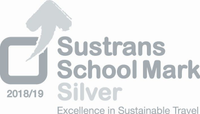
Dr. Seuss: "The more that you read, the more things you will know. The more that you learn, the more places you'll go.”
Rationale
Literacy is at the heart of learning and underpins the entire curriculum. At Fane Street Primary School, we recognise that competence in language is vital for children’s academic achievement, personal growth and their ability to communicate effectively in the world around them. This policy sets out our approach to the teaching, learning and assessment of literacy across the school.
In Fane Street we aim to:
• Allow children to communicate effectively through Talking and Listening, Reading and Writing.
• Enable every child to express themselves creatively, confidently and meaningfully.
• Support independent learning, critical thinking, and the ability to use language across the curriculum.
• Foster enjoyment of reading and writing through engaging experiences.
• Identify and support pupils with additional literacy needs.
High Frequency Words
During the Foundation stage pupils, are introduced to Word List 1. These words correspond to the Rigby Star reading scheme; therefore, the words are introduced in class, reinforced through a range of play based activities as well as being reinforced in context with their guided reading.
In Key Stage 1 children’s exposure to the High Frequency Words extends to List 6. This is in line with the Northern Ireland Curriculum, which states Key Stage 1 pupils “build up a sight vocabulary”: (NI Curriculum pg 54).
In Key Stage 2 the pupil’s exposure to high frequency words is extended to List 9, which are the first 300 words. By recognising these first 300 words pupils will be able to “read 65% of all written material contained in newspaper articles, magazines, textbooks, children's stories, novels, and more.”(Fry, Kress and Fountoukidis 2004, Dyslexia Support services)
The Jolly Phonics and Spelling
In Fane Street Primary we use the Jolly Phonics, Spelling and Grammar program. This program is a multi-sensory synthetic phonics method that have children reading and writing from an early age.
The Jolly Phonics Handbook and Pupil books One to Three are used to introduce and teach the letter sounds. These 42 letter sounds are phonic building blocks that children, with the right tools, use to decode the English language. When reading a word, pupils recognise the letters and blend together the respective sounds; when writing a word, children identify the sounds and write down the corresponding letters. These skills are called blending and segmenting.
Reading
In Fane Street Primary One to Four pupils read with an adult at least four times per week, ideally five times per week (Monday to Friday). In Primary Five to Seven children read daily both in school and at home.
The ‘Reading Partnership Programme’ is used in Key Stage One and Two alongside the volunteer programme ‘Time to Read’ to boost reading to support children identified from the PTE results.
The online reading systems we use are Bug Club and the Libby App.
In Fane Street Primary we aim to boost standards in reading through:
· Better Reading Support Partners (Primary Four to Primary Seven)
· Time to Read
· Reading Buddies (After SEAG, Primary Seven and Primary One)
Writing
In Primary 1 to Primary 7 (P1–P7), writing is taught through a variety of genres, with a focus on the Talk for Writing approach. to help our children develop a broad range of literacy skills. The genres are revisited and deepened as our children progress through the years, often linked to cross-curricular theme.
Talking and Listening
In the Northern Ireland Curriculum for P1 to P7, Talking and Listening is a key component of the Language and Literacy area of learning.
Children are encouraged to:
- Listen actively to guidance, instructions, stories, poems, and media texts.
- Ask and answer questions to find information and clarify understanding.
- Retell stories and events, showing understanding of structure and sequence.
- Express thoughts, feelings, and opinions clearly and respectfully.
- Take turns in conversations, group discussions, and paired activities.
- Use appropriate speech and voice quality, including volume, tone, and clarity.
- Recognise features of spoken language, showing phonological awareness.
- Reflect on their own speaking and listening, considering how they communicate and how others






